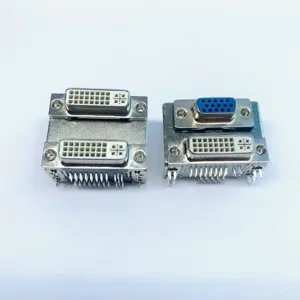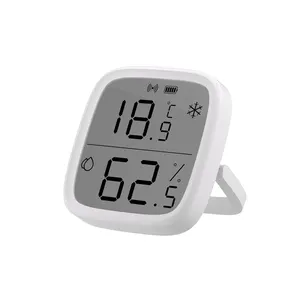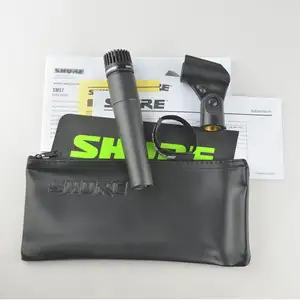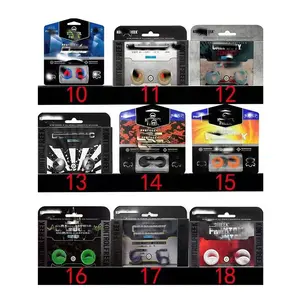Popular in your industry






VGA Audio To HDMI Converter With Audio Connector VGA To HDMI Adapter
$9.00 - $12.00
Min. Order: 1 piece
4.8/5.0 (20)·"excellent customer support"





High Quality RS232 DB9 Serial To RJ12 Cable Connector DB9 To RJ12 Convertor VGA Cable4.9/5.0 (4)·"good service"
Ready to Ship
$0.80 - $1.90
Min. Order: 100 pieces
Shipping per piece: $0.56




























Customize 1080P Hdmi To Vga With Audio Conversion Cable Hdmi To Vga Converter5.0/5.0 (14)·"fast delivery"
Ready to Ship
$6.50 - $9.00
Min. Order: 10 pieces
Shipping per piece: $0.99







DTECH ODM/OEM HDMI TO VGA converter 1080p mini VGA connector cable hdmi to vga adaptor
$1.70 - $2.50
Min. Order: 10 pieces
4.8/5.0 (31)·"good customer support"





Factory oem odm male to female dp to vga cable black high speed DP to VGA adapter gold plated dp to vga converter
$1.65 - $2.56
Min. Order: 100 pieces
4.9/5.0 (44)·"good service"



Factory Top-rated Desktop OEM ODM RX580 DDR5 8GB GPU VGA card2.7/5.0 (2)·"good service"
Ready to Ship
$89.90
Min. Order: 2 pieces
Shipping per piece: $0.00






OEM ODM 4k 3D HDMI Male to VGA Female 1080P 20cm hdmi to vga cable converter
$1.53 - $2.26
Min. Order: 10 pieces
0.0/5.0 (0)·"Fast delivery"





Hot Sell ODM OEM Male to Female 1080P HDMI TO VGA Adapter For HDTV PC Laptop TV
$0.99 - $1.99
Min. Order: 10 pieces
4.9/5.0 (4)·"good service"





Hot Sell ODM OEM Male to Female 1080P HDMI TO VGA Adapter For HDTV PC Laptop TV5.0/5.0 (9)·"fast delivery"
Ready to Ship
$0.98 - $1.15
Min. Order: 100 pieces
Shipping per piece: $0.63






Factory Top-rated Desktop Oem Odm Rx580 Ddr5 8gb Gpu Vga Card
$127.00 - $372.00
Min. Order: 2 pieces
0.0/5.0 (0)·"Nice cooperation"





Factory oem odm male to female dp to vga cable black high speed DP to VGA adapter gold plated dp to vga converter4.9/5.0 (19)·"Fast Shipping"
Ready to Ship
$0.78 - $0.85
Min. Order: 10 pieces
Shipping per piece: $1.92






ODM OEM HDMI 4K 120M 100M 50 Metros Cable Hdmi Support 4K@60Hz Active Optical Fiber Hdmi Cable
$12.17 - $54.78
Min. Order: 10 pieces
5.0/5.0 (14)·"Customer service"





NV GT710 64bit DDR3 2GB Graphics Cards for Desktop support OEM ODM4.6/5.0 (13)·"fast shipping"
Ready to Ship
$33.00
Min. Order: 2 pieces
Shipping per piece: $13.66






High-end NEEXXT C1 OEM ODM 4K 30Hz or 60Hz HDTV Video Cable USB 3.1 Type-C To Displayport 144hz / 2meter Adapter For Computer4.7/5.0 (84)·"customer service"
Ready to Ship
$0.99 - $2.19
Min. Order: 10 pieces
Shipping per piece: $2.38





Professional suppliers support ODM/OEM gtx750 2gb
$63.00 - $74.00
Min. Order: 10 pieces
4.9/5.0 (17)·"excellent service"










OEM & ODM 1080P hdmi to vga audio video cable hdmi to vga kable for TV Monitor HDMI TV-BOX
$2.99 - $4.50
Min. Order: 10 pieces
2.9/5.0 (5)·"Excellent Service"





Audio & Video Connection AUX Lines Cord YIVO XSSH OEM ODM DIY 8 Core Copper HIFI 3.8mm Diameter Headphone Earphone Cable Wire4.8/5.0 (37)·"Fast shipping"
Ready to Ship
$6.55 - $7.50
Min. Order: 1 meter
Shipping per piece: $4.53






Factory price USB 3.1 Type C Male To DP DisplayPort Female Adapter Converter cable Support 4K*2K@30Hz OEM/ODM
$2.22 - $2.43
Min. Order: 100 pieces
5.0/5.0 (2)·"Excellent service"





OEM ODM Gold Plated Adapter Male To Female 1080P 24+1 DVI To VGA Converter For Multimedia Monitor
$0.30 - $1.56
Min. Order: 10 pieces
5.0/5.0 (10)·"quick shipping"



Computer vga 1050 video card gtx 1050 high performance for game gtx 1050 ti graphic card welcome OEM ODM order
$100.00 - $170.00
Min. Order: 5 pieces
4.8/5.0 (17)·"good Service"





OEM ODM Male and Female Adapter DC Power Jack Rohs Compliant Waterproof Audio & Video Wiring Harness
$1.00 - $2.80
Min. Order: 100 pieces
5.0/5.0 (6)·"punctual shipping"





Hot Selling ODM OEM HD 3d 4k audio and video metal box hdmi to rca hdmi to av converter4.9/5.0 (19)·"Great service"
Ready to Ship
$7.88 - $10.28
Min. Order: 2 pieces
Shipping per piece: $14.89






FJ-15-4 Fjgear Odm/Oem Support 3D 1920*1440 Switch Selector 4 Input 1 Output 4Port Vga Switch
$1.84 - $1.99
Min. Order: 2 pieces
4.9/5.0 (37)·"Fast delivery"





ODM OEM HDMI 4K 120M 100M 50 Metros Cable Hdmi Support 4K@60Hz Active Optical Fiber Hdmi Cable

$10.00 - $50.00
Min. Order: 10 pieces
4.4/5.0 (15)·"excellent service"




OEM ODM GTX650 GTX650TI Geforce GTX650TI with 2G Memory Graphics Card Video Card 768SP for NVIDIA Gaming & Office
$36.67 - $41.25
Min. Order: 1 piece
0.0/5.0 (0)





8500 High Lumens 720P/1080P Projector Factory OEM ODM 4K LED LCD Home Theater Portable Video Projector0.0/5.0 (0)
Ready to Ship
$28.00 - $55.00
Min. Order: 50 pieces
Shipping per piece: $4.33




Computer VGA cards, GTX1050Ti ,high performance for game , welcome OEM ODM order
$150.00 - $178.00
Min. Order: 1 piece
5.0/5.0 (1)·"fast shipping"





OEM Factory 2M USB C to HDMI Cable with PD Power Adapter 4K 30Hz HD Screen Switch Custom ODM Type C to HDMI Cable

$5.90 - $6.40
Min. Order: 100 pieces
5.0/5.0 (1)Top categories
About vga oem odm
vga oem odm are hardware segments of the computer that help you see images on the monitor/screen. The data is converted into the signal by vga oem odm that help render images on the screen of high quality, definition, and overall appearance. vga oem odm are also essential components for gaming and used widely in the production of content. Every process related to the projection of the image on the screen or monitor is computed by them.
vga oem odm function in conjunction with a processor. The software applications working in coordination with the processor send digital data to the vga oem odm. The vga oem odm then compute the decision on the usage of pixels to convert digital data into images and display them for the users.
Though vga oem odm are not mandatory equipment for all PCs but are must-have hardware for people involved in gaming, photoshop, or video editing. Applications like Adobe photoshop do not function without having vga oem odm installed on your device. If you are someone looking for the latest releases in vga oem odm, tune into Alibaba.com and uncover the gamut of options from which you are sure to find the one fitting your requirement.
Worried about the exorbitant costs that incur while going for products with the newest features? Well, worry no more because Alibaba.com has irresistible deals on items at all prices-span i.e. from low to high to medium. This spread of vga oem odm in all brands help customers stay budgeted and enjoy their purchase. Hurry up before the offer expires!
vga oem odm function in conjunction with a processor. The software applications working in coordination with the processor send digital data to the vga oem odm. The vga oem odm then compute the decision on the usage of pixels to convert digital data into images and display them for the users.
Though vga oem odm are not mandatory equipment for all PCs but are must-have hardware for people involved in gaming, photoshop, or video editing. Applications like Adobe photoshop do not function without having vga oem odm installed on your device. If you are someone looking for the latest releases in vga oem odm, tune into Alibaba.com and uncover the gamut of options from which you are sure to find the one fitting your requirement.
Worried about the exorbitant costs that incur while going for products with the newest features? Well, worry no more because Alibaba.com has irresistible deals on items at all prices-span i.e. from low to high to medium. This spread of vga oem odm in all brands help customers stay budgeted and enjoy their purchase. Hurry up before the offer expires!






























































